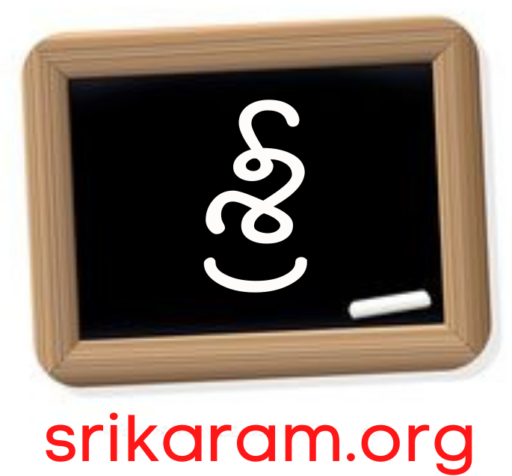Telugu vs Tamil: A Comparative Analysis
Languages play a crucial role in shaping cultures and societies. Among the major Dravidian languages, Telugu and Tamil hold prominent places due to their rich history, extensive literature, and widespread influence. Both languages have evolved over centuries and have distinct characteristics that make them unique. This article delves into the historical, linguistic, literary, and cultural aspects of Telugu and Tamil, highlighting their similarities and differences.
Historical Background
Telugu
Telugu is one of the oldest Dravidian languages, with its roots traced back to inscriptions from 400 BCE. It evolved from Proto-Dravidian and gained prominence as a literary language by the 11th century CE. The earliest known inscription in Telugu is from 575 CE, attributed to Renati Cholas. Over time, Telugu literature flourished, particularly under the patronage of the Vijayanagara Empire and later under the rule of Eastern Ganga and Kakatiya dynasties. Telugu became the official language of Andhra Pradesh and Telangana, making it the most widely spoken Dravidian language.
Tamil
Tamil boasts a history that dates back over 2,000 years, making it one of the world’s oldest living languages with a continuous literary tradition. The Sangam literature (300 BCE–300 CE) is a treasure trove of classical Tamil poetry and prose. Tamil has been an official language in Tamil Nadu, Sri Lanka, and Singapore. Its ancient script evolved from the Brahmi script, and its literature has greatly influenced South Indian culture. Tamil remains a classical language of India, preserving its linguistic heritage through centuries of change.
Script and Phonetics
Telugu Script
Telugu script is derived from the Brahmi script and later developed into a rounded, elegant form influenced by Kannada script. It consists of 56 letters, including vowels, consonants, and conjunct consonants. Telugu is known for its melodious sound, often considered the “Italian of the East” due to its vowel-ending words, which provide a rhythmic flow to speech.
Tamil Script
Tamil script, derived from Brahmi, has 12 vowels, 18 consonants, and one unique character (ஃ) called “Aytam.” Unlike Telugu, Tamil lacks aspirated consonants, and its script has undergone simplifications over time. Tamil phonetics emphasize short and long vowels, producing distinct word pronunciations that set it apart from other Dravidian languages.
Grammar and Linguistic Features
Telugu Grammar
Telugu grammar follows the typical Subject-Object-Verb (SOV) order. It incorporates Sanskrit influences, making it a mix of native Dravidian and Indo-Aryan elements. Telugu nouns have three genders (masculine, feminine, and neuter) and two numbers (singular and plural). Verb conjugation is complex, with various tenses and moods, offering a rich expression of actions.
Tamil Grammar
Tamil grammar is rooted in the ancient Tolkappiyam text, which codified its linguistic rules. Like Telugu, Tamil follows an SOV structure, but it retains more archaic Dravidian characteristics. Tamil has a unique system of noun classification and verb conjugation, which differentiates between human and non-human nouns. Unlike Telugu, Tamil has not absorbed as many Sanskrit words, maintaining a purer Dravidian vocabulary.
Literature and Cultural Significance
Telugu Literature
Telugu literature is vast, covering poetry, drama, and prose. The golden age of Telugu literature began with Nannaya Bhattaraka’s translation of the Mahabharata in the 11th century. Later poets like Tikkana and Errana contributed significantly to epic translations. The Bhakti movement brought saint-poets like Annamacharya, who composed devotional songs that are still popular today. Modern Telugu literature includes prominent writers like Gurajada Apparao, Sri Sri, and Viswanatha Satyanarayana.
Tamil Literature
Tamil literature is one of the richest in India, with classical works dating back over two millennia. The Sangam poetry collections, such as Kuruntokai and Purananuru, depict love, war, and morality. Tamil literature flourished under the Chola and Pandya dynasties, with Kamban’s Ramayanam and Periyapuranam as notable contributions. Modern Tamil literature includes authors like Kalki Krishnamurthy and Sujatha, whose works span historical fiction to science fiction.
Cultural Influence and Popularity
Telugu Cultural Influence
Telugu culture has been significantly shaped by its rulers, artists, and traditions. Kuchipudi, a famous classical dance form, originates from Andhra Pradesh. The Telugu film industry, Tollywood, is one of India’s largest, producing movies with global appeal. Telugu music, including classical compositions by Thyagaraja and Annamacharya, continues to captivate audiences worldwide.
Tamil Cultural Influence
Tamil culture is deeply rooted in tradition, with a strong emphasis on classical arts, literature, and music. Bharatanatyam, a renowned classical dance form, originated in Tamil Nadu. The Tamil film industry, Kollywood, has a massive influence on Indian cinema, producing legendary actors and directors. Tamil folk music, Carnatic music, and temple architecture further showcase the richness of Tamil heritage.
Modern Usage and Global Presence
Telugu Today
Telugu is spoken by over 80 million people, making it the most widely spoken Dravidian language. It has official status in Andhra Pradesh and Telangana and is recognized as a classical language of India. Telugu communities thrive in the US, UK, and Australia, contributing to its global spread.
Tamil Today
Tamil is spoken by approximately 75 million people and holds official status in Tamil Nadu, Sri Lanka, and Singapore. It is one of the 22 scheduled languages of India and has a vast diaspora in Malaysia, Canada, and the Middle East. Tamil’s strong cultural preservation efforts have ensured its continued growth and relevance.
Conclusion
Telugu and Tamil, while both Dravidian languages, have distinct identities shaped by history, script, grammar, and cultural contributions. Telugu’s mellifluous sound and extensive literary tradition make it a vibrant language, while Tamil’s antiquity and classical heritage give it unparalleled depth. Both languages continue to thrive, preserving the essence of their rich past while embracing the modern world. Understanding their similarities and differences not only enriches linguistic knowledge but also deepens appreciation for South India’s cultural diversity.
